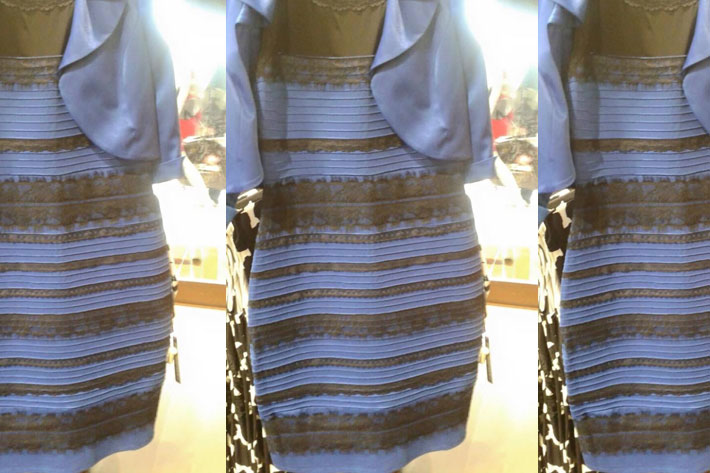George Washington University Professor Murray Loew is baffled.
“It looks gold and white to me,” I tell him.
“Really? The same picture? I don’t see how you can see that,” he challenges.
Dr. Loew, a professor in the School of Engineering and Applied Science, has experience solving artistic mysteries: At the National Gallery of Art, he and a team of researchers are using biomedical imaging techniques to study the hidden details in centuries-old paintings.
But he can’t wrap his head around the dual-colored dress that has divided the Internet.
“I can certainly believe that the combination of the light source and the dress material may affect what’s reflected,” he said. “What I can’t understand is why people see it so differently.”
The dress in question was originally posted to Tumblr after a group of people could not decide on its color. It appears that the dress, which can be found on Amazon, is definitely black and blue. But looking at the photo posted on Tumblr, some swear it’s gold and white. In less than 24 hours, nearly 30 million people viewed Buzzfeed’s “What Colors Are This Dress” poll.
Neither gender nor age seems to determine where you stand in #TheDress debate. So, what is going on?
The visual illusion is caused by an individual’s interpretation of the light source in the dress photo, according to Sarah Shomstein, an associate professor of cognitive neuroscience in the Department of Psychology. She studies how the human brain processes sensory information collected from our five senses. (Dr. Shomstein saw a black and blue dress Thursday, but Friday she switched to team gold.)
A phenomenon known as color constancy ensures that the brain is able to perceive the color of an object under varying light conditions. In other words, an object’s color will remain the same, even if the light illuminating it changes.
However, color, Dr. Shomstein says, is simply an interpretation of a physical stimulus, which means that it is subject to a set of assumptions about an object’s surroundings.
Without any reference points or context, your brain may make assumptions that differ from your peers.
Since the dress photo is so overexposed, it is especially cryptic, Dr. Shomstein says.
“For this dress, since the image is an odd one, it falls into this perfectly ambiguous state where it can be interpreted two different ways,” she says. “Are we looking at it through window? Are we inside the room looking at the dress directly? What is the lighting like?”
Those who see a white and gold may (unconsciously) assume that daylight is hitting the dress, while others assume indoor or cloudy-day lighting may see black and blue.
The key question is what drives the difference in these assumptions. Why do some people think the light is coming from one source and others believe the opposite?
“That’s a very interesting question and one we absolutely don’t have an answer to,” Dr. Shomstein says.
So, for now, the dress mystery remains at least partially unsolved. Still, Dr. Shomstein says, it’s a fascinating example of how our brains create illusions.
“People don’t think that their perception is only an interpretation of the physical world. But in fact, it is,” says. “It really is mind blowing.”


